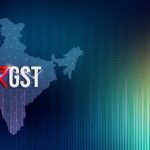Filing income tax returns (ITR) is an annual obligation for salaried individuals in India. It not only ensures compliance with tax laws but also offers various benefits such as claiming refunds, avoiding penalties, and maintaining financial transparency. It’s crucial for salaried taxpayers to understand key aspects related to filing their income tax returns for assessment year 2024-25. Here are 10 important points every salaried individual should consider:
1. Understanding the Basics of Income Tax Slabs and Rates
For FY 2023-24 (AY 2024-25), salaried individuals should be aware of the income tax slabs and rates that will apply to their income. As per the current tax structure, the old income tax slabs for individuals below 60 years of age are as follows:
- Income up to ₹2,50,000: No tax
- Income from ₹2,50,001 to ₹5,00,000: 5%
- Income from ₹5,00,001 to ₹10,00,000: 20%
- Income above ₹10,00,000: 30%
Additionally, a cess of 4% is applicable on the income tax amount.
2. Collecting Form 16 from Employer
Form 16 is a crucial document issued by employers to their employees, summarizing their income and taxes deducted during the year. It contains details such as salary income, allowances, deductions under Chapter VI-A, and TDS (Tax Deducted at Source) deducted by the employer. Salaried individuals must ensure they receive Form 16 from their employers by the due date to accurately file their ITR.
3. Reporting Income from Salary and Other Sources
When filing ITR, salaried individuals must accurately report their income from salary, including basic salary, allowances, bonuses, perquisites, and any other income received from the employer. Additionally, income from other sources such as interest from savings bank accounts, fixed deposits, and rental income, if applicable, must also be reported in the ITR.
4. Claiming Deductions under Section 80C to 80U
Salaried taxpayers can claim deductions under various sections of the Income Tax Act under the old tax regime to reduce their taxable income. Some common deductions include:
- Section 80C: Deduction up to ₹1,50,000 for investments in Provident Fund (PF), Public Provident Fund (PPF), Equity Linked Savings Scheme (ELSS), life insurance premiums, etc.
- Section 80D: Deduction for health insurance premiums paid for self, spouse, children, and parents.
- Section 80E: Deduction on interest paid on education loans.
- Section 80TTA: Deduction on interest income from savings accounts.
Ensuring these deductions are correctly claimed can significantly reduce the taxable income and overall tax liability.
5. Calculating and Paying Advance Tax
Salaried individuals whose total tax liability after TDS exceeds ₹10,000 in a financial year are required to pay advance tax in installments. Advance tax helps in avoiding a lump-sum tax payment at the end of the year and includes self-assessment tax if applicable. Calculating and paying advance tax ensures timely compliance with tax laws and avoids interest and penalties.
7. Choosing Between Old and New Tax Regime
From FY 2020-21 onwards, taxpayers have the option to choose between the old and new tax regimes. The new tax regime offers lower tax rates but without deductions and exemptions available under the old regime. Salaried individuals must evaluate their tax liability under both regimes and choose the one that minimizes their tax outgo. Once chosen, the regime can be selected for each subsequent year based on financial circumstances.
8. Verifying Form 26AS
Form 26AS is a consolidated statement that reflects all taxes paid on behalf of the taxpayer, including TDS deducted by employers, banks, or other deductors. It also includes advance tax and self-assessment tax payments made by the taxpayer. Verifying Form 26AS ensures that all taxes deducted and paid are correctly reflected, avoiding discrepancies during tax filing.
9. Filing ITR Within the Due Date
The due date for filing income tax return for FY 2023-24 (AY 2024-25) is typically July 31, 2024, for individuals not required to undergo tax audit. Filing ITR within the due date is crucial to avoid penalties and interest on late filing. Delayed filing can also result in loss of certain benefits such as carry forward of losses and interest on refunds.
10. E-verifying the Filed Return
After filing the ITR online, it is essential to verify it within 30 days. Verification can be done electronically using methods such as Aadhaar OTP, Net Banking, or EVC (Electronic Verification Code). Verifying the filed return completes the tax filing process and ensures that the return is processed by the Income Tax Department.
Conclusion
Filing income tax return is not only a legal obligation but also a means to ensure financial transparency and compliance with tax laws. For salaried individuals, understanding these 10 important points for filing ITR for FY 2023-24 (AY 2024-25) can simplify the tax filing process and help in optimizing tax savings. By staying informed about income tax slabs, deductions, exemptions, and filing deadlines, salaried taxpayers can effectively manage their tax liabilities and contribute to their financial well-being.
Disclaimer: The content provided on this blog or website is for informational purposes only. It is not intended to be, and should not be construed as, advice or recommendations of any kind. Always seek the advice of a qualified professional with any questions you may have regarding your specific situation. The information presented here is based on our personal opinions and experiences and should not be relied upon for making any decisions.






